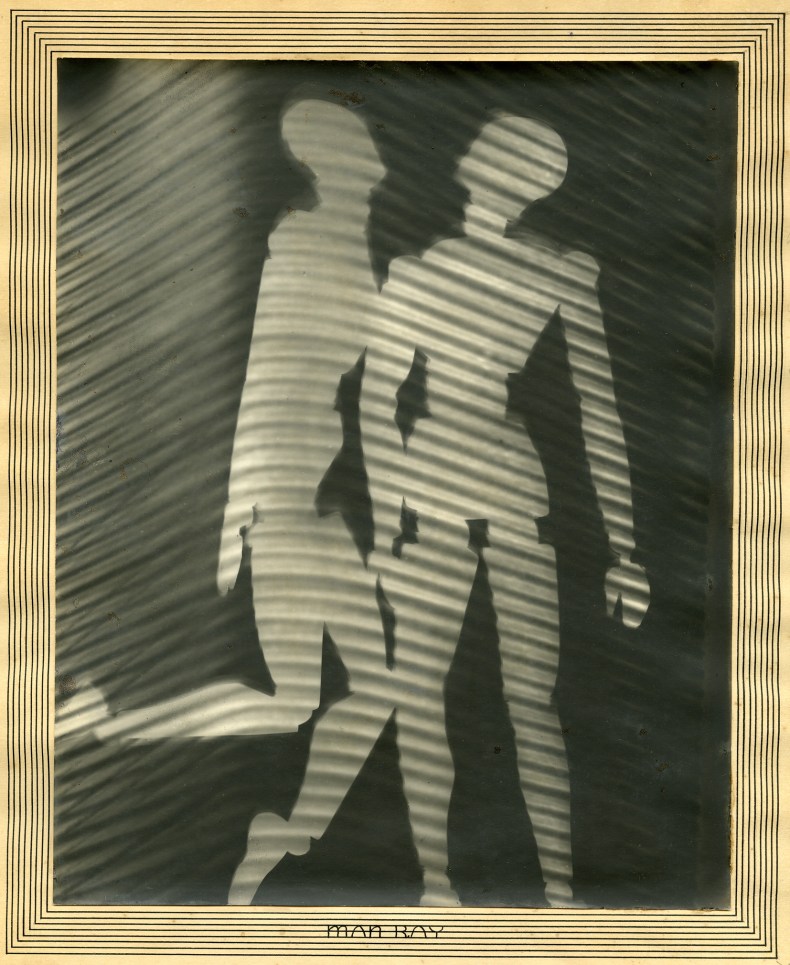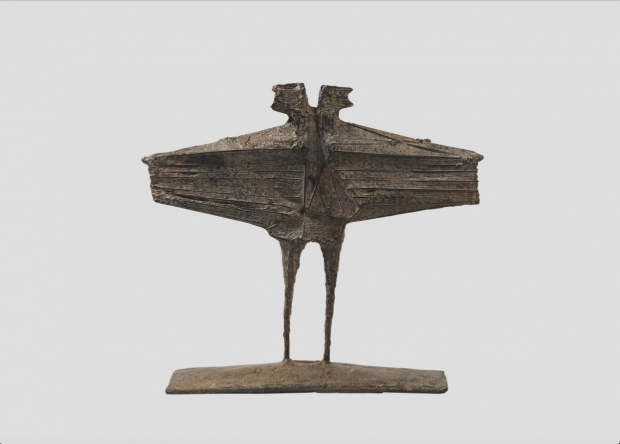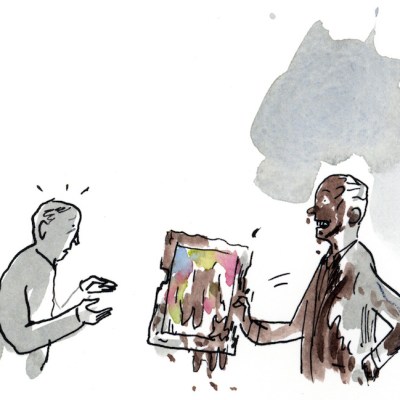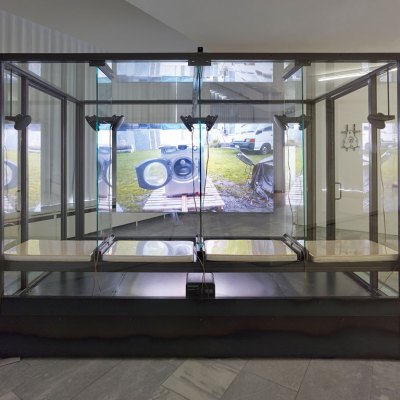A decade ago, in the frenzy of the pre-recession art boom, the idea that older art could lend kudos to its contemporary successors might have seemed laughable. Yet economic and political turbulence has engendered a flight to substance and created a more reflective market atmosphere in which context, juxtaposition, and dialogue are the mots du jour. Indeed these words ripple through the fifth edition of Frieze Masters in London (6–9 October), with its mix of historical and modern art. The Frieze London team launched the fair with ambitious intent in 2012 and the Frieze brand attracted top dealers from around the world. The aim, says Joanna Stella Sawicka, artistic director of Frieze fairs, is to ‘expand the world of art on offer for every type of collector – many of whom have wandered over from Frieze London and might be considering historical art for the first time’.
Stephen Friedman, an exhibitor, thinks that the concept mirrors his clients’ buying habits today, ‘as historical and contemporary works are often acquired in tandem’. More accustomed to ‘the quick movement and frenzy often encountered at contemporary art fairs’, Friedman enjoys Frieze Masters, which is ‘much more focused on longer conversations and learning’.
Earlier this year, the US sport and entertainment conglomerate WME-IMG became Frieze’s first external investor. Frieze Fairs director Victoria Siddall says that this ‘will not alter the day-to-day running of the event’. WME-IMG will inject money, contacts and, no doubt, contract-negotiating power, as well as support the £150,000 Frieze Tate Fund. Another new development is the partnership with art advisors Beaumont Nathan, who will be based at Frieze Masters and offer free consultations to VIP-card holders in need of guidance.
The 134 exhibitors are split between the main section, Spotlight – 21 solo artists presentations under new curator Toby Kamps (of Houston’s Menil Collection) – and Collections. The latter, a cluster of smaller stands introduced last year and curated by Sir Norman Rosenthal, injects a variety of specialisms and price points. This year, Arcadia Cerri’s early European sculptures will rub shoulders with Gerrit Rietveld’s modernist designs in Galerie Ulrich Fiedler’s ‘Destijl room’ – a departure from Frieze’s usual avoidance of furniture.
Archaic Cretan helmet, Archaic and Orientalising periods, c. 650–620 BC. Courtesy Kallos Gallery

Though a handful of galleries have been lost to the first TEFAF New York later in the month (see pp. 46–47), antiquities galleries have grown in number at Frieze Masters. It will be Kallos Gallery’s first fair since it was established in London two years ago by the collector Baron Lorne Thyssen-Bornemisza. The apple of his eye is a bronze Cretan helmet. With its mysterious crest, perhaps designed to incite terror on the battlefield, the helmet is one of only two known examples of its type. The other, in Hamburg’s Museum für Kunst und Gewerbe, says Thyssen-Bornemisza, ‘is less intact than the Kallos example, and it does not have any of the narrative scenes that make the Kallos helmet so exceptional. These narrative drawings represent some of the earliest known Cretan mythological scenes and offer fascinating insight into the myth tradition in Archaic Crete.’
Collaborative stands are on the rise and among them is that of newcomers Sies + Höke (Düsseldorf) and Kicken Berlin (Berlin). They will show avant-garde photography from the 1960s to 1980s by Sigmar Polke, alongside photographs by artists who influenced him or whom he influenced, such as Erwin Blumenfeld, Man Ray, and Francesca Woodman.
Rayographie (projet pour une tapisserie) , (1925/26), Man Ray. Courtesy Kicken Berlin

The rayograph from 1925/26 by Man Ray and an accompanying, wall-sized enlargement made for a tapestry were recently discovered in Aubusson, the French town famous for its tapestries. The enlargement was made not later than 1938 and is Man Ray’s largest surviving photographic work from the period. Whether a tapestry was ever produced is a mystery, but the project was likely curtailed by the outbreak of the Second World War and Man Ray’s return to the US in 1940.
Such themed booths of ‘tightly curated’ groups are popular. Stephen Friedman Gallery’s ‘Wool, Wire and String’ brings together Alexander Calder, Gego, Jiro Takamatsu, and Eva Hesse – artists who worked across four continents but shared an interest in line and questioning the meaning of sculpture. ‘What binds the artists here is their use of certain materials, and our presentation will allow the viewer to interpret their work outside of the usual art historical categories,’ Friedman says. The minimalist aesthetic is typified by the delicate web-like welded bronze piece from the 1970s by German-born Venezuelan artist Gertrud Goldschmidt (Gego), who was recently the subject of a solo show at Dominique Lévy Gallery in London.
Blain | Southern has chosen the solo show route, focusing on Lynn Chadwick and marking the 60 years since he became the youngest recipient of the International Prize for Sculpture at the 1956 Venice Biennale. It includes some 15 early works from the 1950s, the decade in which Chadwick rose to prominence. In 1957, The Air League of the British Empire commissioned the artist to produce a memorial to the airship R34’s Atlantic crossing in 1919; it was intended for the Long Haul Terminal at Heathrow. Chadwick produced the divisive Maquette II for R34 Memorial (1958), a work praised by critics but despised by traditionalists. Lord Brabazon of Tara, leader of the Guild of Air Pilots and Air Navigators, described it as a ‘diseased haddock’. So it was withdrawn from committee. Chadwick reworked the original maquette, of which a full-size version, renamed Stranger III, was cast in 1959. Both the original Maquette II and, outside in the sculpture park, the monumental Stranger III, will appear at Frieze Masters.
Female artists are also prominent. Sperone Westwater will bring the work of Susan Rothenberg, an American painter it has represented since 1987, but who is little known in the UK. Rothenberg made her name in New York in the 1970s, with a series of horse paintings, bucking the prevailing minimalist, abstract trend. Accident (1991–92) is from a series of paintings Rothenberg made in the 1990s after she saw her husband falling from his horse. Its elusive subject is typical of Rothenberg’s paintings, which, says Sperone Westwater’s Andrew Lee, tread ‘the charged line between figuration and abstraction’, an interest he thinks relevant to much painting today.
Feminist art is the subject of a Frieze Talk this year. The extensive talks programme, co-curated for the first time by the Royal Academy’s Tim Marlow and Frieze magazine’s Jennifer Higgie, is no sideshow. Featuring artists such as Cornelia Parker and Lynette Yiadom-Boakye, it adds to Frieze Masters’ richness of content. As for sales, while antiquities and tribal art have broad appeal, the jury remains out on how much business is conducted in pre-20th-century paintings. Nevertheless, contemporary and historical galleries seem to enjoy this rare chance to exhibit alongside each other and meet a new audience. That energy, combined with a sense of discovering the unexpected, is a great strength.
Frieze Masters is at Regent’s Park, London, from 6–9 October.



